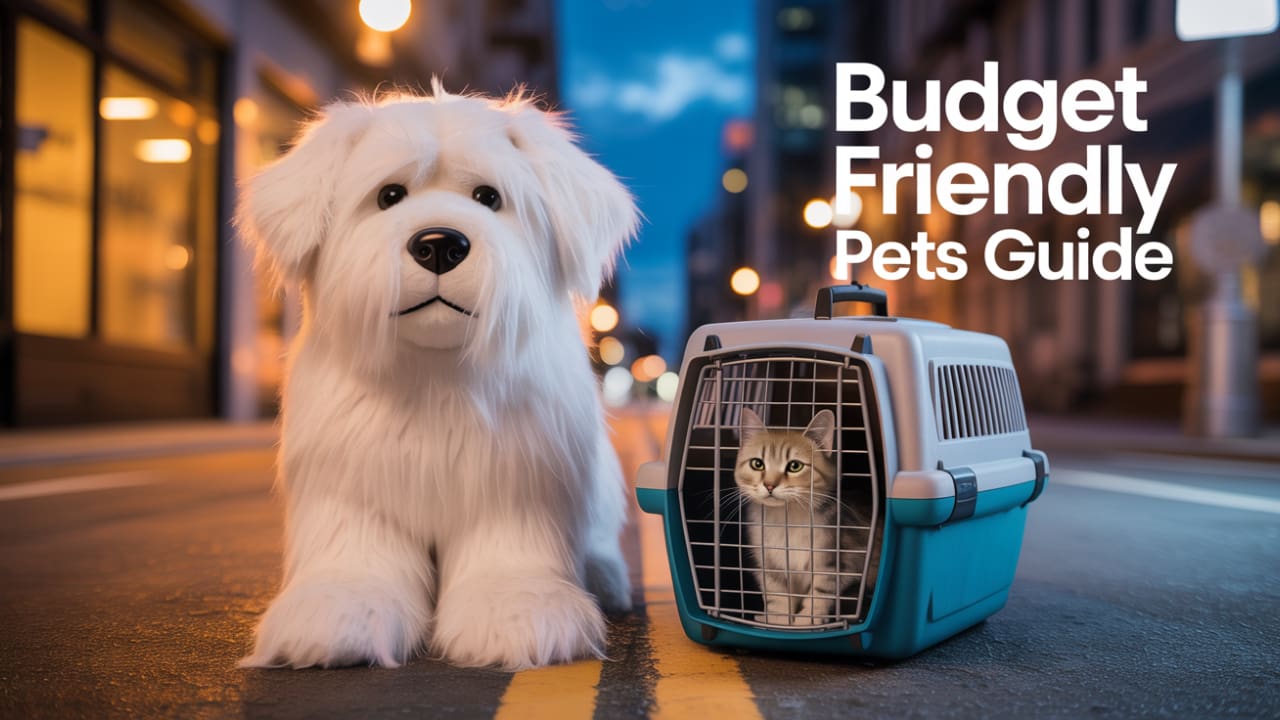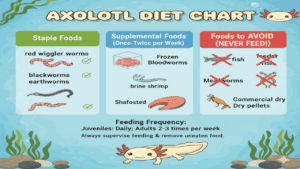Best Cheap Pets Buying Guide (2025): Real Costs, Smart Picks, and Mistakes to Avoid
Thinking about getting a pet without draining your wallet? You’re not alone. And the good news is, you don’t need to sacrifice quality care or companionship to stay within budget.
Whether you’re considering a betta fish for under $60 total, a low-odor leopard gecko that lives over a decade, or a hamster with $15 monthly upkeep, there are smart, affordable options that fit both your lifestyle and your finances.
Now, even some of the best cheap pets aren’t low-cost over time. A $20 turtle could require a $200 habitat setup, while that $10 hermit crab may need humidity control and group living. These are facts many first-time buyers overlook.
Experts also caution against impulse buying from unreliable sellers, which often leads to expensive health problems later.
So what’s the best path forward? Keep reading. We’ll break down real ownership costs, top beginner-friendly choices, and red flags to avoid so you can confidently choose the best cheap pets in 2025.
What is the cheapest pet to keep?

If you’re on a tight budget but still want the joy of having a pet, the good news is that several animals are both affordable and rewarding to care for.
The cheapest pets to keep often fall into the categories of small mammals, fish, and certain reptiles, each with their own low-cost advantages. But not all “cheap pets” are created equal when it comes to long-term expenses, maintenance, and care requirements.
Let’s start with some top contenders. Betta fish are frequently considered one of the cheapest pets overall. They require minimal space, basic equipment, and small amounts of food. You can set up a full betta tank for around $50-$150. And their monthly upkeep rarely exceeds $10.
Hamsters and gerbils are also budget-friendly, with starter kits often available for around $80-$120, and food and bedding costs running around $15-$20 per month.
Budgies (parakeets) are another excellent low-cost choice, especially for apartment dwellers. They’re social, entertaining, and relatively easy to care for on a budget.
That said, many people overlook hidden costs that creep in over time, like replacements for chewed toys, vet visits, or cage upgrades. What starts as a $15 pet can turn into a few hundred dollars over a year if you’re not careful.
Experienced pet owners agreed that a common mistake is underestimating how quickly basic supplies like bedding, water conditioners, or treats add up.
Veterinarians also recommend checking lifespan vs. care commitment before buying. A cheap pet with a longer lifespan, like a leopard gecko or a budgie, may have more cost efficiency over time than a hamster that only lives two years.
And while reptiles like anoles or hermit crabs are low-cost upfront, they do best with specific humidity or temperature setups. So make sure you’re equipped for those needs.
Still unsure? Keep reading then. Up next, we’ll explore how much these “cheap” pets really cost once you factor in the full picture.
How much do the best cheap pets really cost over time?

At first glance, a pet that costs $10 at the store sounds like a steal. But the real cost of owning even the best cheap pets is hidden in the day-to-day expenses that add up fast, especially if you’re not budgeting carefully.
So, what does it really cost to keep a low-budget pet happy, healthy, and thriving over time?
Let’s break it down. Initial setup costs can vary significantly. A betta fish might only cost $5, but once you factor in a tank, filter, water conditioner, and decor, you’re easily looking at $50-$75 upfront.
A hamster or gerbil may run you $15-$25. But their habitat, wheel, bedding, food bowl, and water bottle can push your starting cost to $80-$120.
Birds like budgies might start around $30, but their cage setup and enrichment toys can cost $100 or more.
And you will need to take monthly maintenance into consideration. The best cheap pets, like hamsters, anoles, or even hermit crabs, still also require recurring purchases.
You should expect to spend $10-$30 per month for essentials like food, bedding, vitamins, and cleaning supplies. If your pet needs heat lamps or humidity control, like some reptiles, your electricity bill could also nudge up slightly.
Over a year, even the cheapest pets can total $250-$500 in ongoing expenses.
One of the biggest mistakes new owners make is skipping routine vet checkups because “it’s just a cheap pet.” But small animals still need basic health care. And costs can spike if an emergency visit is needed.
Veterinarians often advise setting aside an emergency fund (even $100) for minor illnesses or supplies replacements.
What’s the bottom line? Cheap pets offer affordable companionship. But they’re not zero-cost. Being aware of long-term upkeep helps you choose the best fit for your budget and lifestyle.
But what about unexpected veterinary emergencies? Our 2025 research reveals the harsh reality of what ‘cheap’ pet owners actually face at the vet.
Real Vet Costs for “Cheap” Pets in 2025
- Hamster check-up: $33 to $50 per visit
- Reptile or gecko exam: $85 to $120 per visit
- Hamster leg injury (emergency): $400 to $950 (including surgery)
- Reptile tail infection treatment: $35 to $130 (based on how bad it is)
Emergency Vet Stories (Real-Life Examples):
- A $15 hamster needed leg surgery that cost $830–$950 after hurting itself on the cage bars.
- One hamster had to get teeth removed—it cost £450–£500 (about $560–$620).
Vet Prices in 2025:
- Vet service costs went up 2.6% compared to 2024 (more than regular price increases).
- Emergency vet visits now usually cost $800 to $1,500.
Next, we’ll dive into which pets match best with kids, beginners, or small spaces.
Best cheap pets for kids, small spaces, and beginner owners
Looking for a pet that’s budget-friendly, easy to care for, and ideal for limited space or first-time owners? You’re not alone.
Many families, apartment dwellers, and first-time pet parents want a companion that fits their lifestyle without breaking the bank (or the lease).
One of the best cheap pets for kids is the hamster. They’re interactive, relatively low-maintenance, and can be housed in compact cages perfect for small bedrooms or apartments.
A starter setup typically costs under $100, and monthly expenses average $15-$25. Just keep in mind: kids under 8 may need supervision, as hamsters can be delicate and nocturnal.
While small pet injuries are relatively rare, safety considerations remain important. Rodent bites (including hamsters) account for only 1.4% of all animal bite emergency visits, with hamsters specifically causing approximately 1,288 bites annually nationwide. The infection rate for small rodent bites is just 2%, significantly lower than dog bites (5-20%) or cat bites (up to 50%).
Betta fish are another excellent option. They’re calm, beautiful, and require minimal space, often thriving in tanks as small as 3 gallons. Their upfront cost is about $50-$150 including the tank and supplies, and ongoing care is simple.
Budgies (parakeets) are great for older children and small homes, offering intelligent interaction and the ability to mimic sounds. Their cages don’t take up much space, and they bond well with gentle handling and daily routines.
Some people might think that choosing a pet is easy, like just picking a turtle or rabbit, right? But it actually requires more complex care or larger habitats than expected.
Pet care experts say that first-time owners should avoid animals with specialized environmental needs (like iguanas or chinchillas) until they have more experience.
In any case, if you’re looking for a stress-free first pet, go for animals that are resilient, simple to feed, and have predictable routines. And always, consider your child’s age, time commitment, and noise tolerance.
Next, we’ll explore the pros and cons of the most popular budget-friendly pets to help you make the smartest choice.
Pros and cons of popular low-maintenance and budget-friendly pets

Not all pets require constant care (or a hefty bank account). In fact, many of the best cheap pets are also surprisingly easy to manage, making them perfect for beginners or busy households.
But even low-maintenance pets come with their own quirks and considerations. So, what are the real pros and cons of the most popular affordable animal companions?
Let’s start with hamsters, one of the go-to pets for kids and first-time owners. Their pros include low cost, small space requirements, and minimal daily maintenance.
However, hamsters are nocturnal and not always eager to be handled during the day. They also need frequent cage cleaning to avoid odor buildup.
Betta fish are often praised for their beauty and simplicity. They’re low-cost, require no companionship, and thrive in small tanks.
But here’s the catch: many people underestimate the need for water changes, heating elements, and proper tank cycling. Improper care can shorten their lifespan significantly.
Budgies, or parakeets, offer more interaction than fish or rodents. They’re social, cheerful, and inexpensive to feed.
However, they need mental stimulation, daily interaction, and a clean, roomy cage to stay healthy. A bored budgie can develop behavioral issues like feather plucking or excessive screeching.
Leopard geckos and hermit crabs are two other cheap, low-effort pets. They don’t require much human interaction and have long lifespans for their price range.
That said, many new owners make the mistake of skipping habitat research. Even these simple pets need correct temperature, humidity, and substrate (cutting corners can lead to stress or illness).
Be careful. Experts warn that calling a pet “low-maintenance” doesn’t mean “zero responsibility.” The pros often lie in predictability and minimal daily work. But the cons show up when owners ignore care basics.
If you’re weighing pet options, this balance of effort vs. reward is crucial for making the right choice.
Up next, we’ll cover the red flags and mistakes to avoid when shopping for cheap or exotic pets.
What to avoid when buying inexpensive or exotic pets
Cheap and exotic pets might seem like the perfect combination. They are unique companions at a fraction of the cost. But beneath that appeal lies a web of potential issues that can catch new pet owners off guard.
If you’re considering a budget-friendly or unusual animal, knowing what to avoid is just as important as knowing what to buy.
First, steer clear of impulse purchases from flea markets, roadside vendors, or poorly reviewed pet stores. These sellers often prioritize volume over animal welfare, and the pets may be sick, improperly bred, or illegally sourced.
Most exotic pet veterinarians say that it’s common to see cases of respiratory infections, parasites, or even malnourishment in animals sold through unreliable channels.
Here’s the thing. Low upfront prices often hide long-term complications. Many exotic animals, like sugar gliders or turtles, require very specific diets, heating, lighting, or humidity levels.
Missing any of these can lead to health issues that quickly become expensive or irreversible. For example, a $20 reptile without UVB lighting may develop metabolic bone disease within months.
Also, watch out for pets sold as “starter-friendly” that really aren’t. Green iguanas, for instance, are cheap and easy to find. But they grow several feet long, require custom enclosures, and can become aggressive without handling.
Hermit crabs are another example: they may cost under $10 but need group living, deep substrate for molting, and a humidity-controlled environment (not a plastic tank with gravel).
Remember, avoid any pet you haven’t researched thoroughly, especially those with exotic or rare labels. Ask for care sheets, verify species legality in your state, and avoid sellers who can’t answer basic health or habitat questions.
A good rule of thumb? If the pet’s price seems too good to be true-it probably is.
Up next, we’ll explore the safest and smartest places to buy affordable pets with peace of mind.
Where to find affordable pets safely (and what sources to skip)
Finding a pet that fits your budget is only half the challenge. The other half is making sure you get it from a safe, ethical source.
The market for affordable pets is crowded with options, but not all of them are trustworthy. Knowing where to look (and what to avoid) can protect both your wallet and the wellbeing of your future pet.
One of the safest places to find budget-friendly pets is your local animal shelter or rescue. Many offer small mammals, birds, and reptiles for adoption at low cost, often including basic supplies, vet checks, and care information.
You’ll also be helping an animal in need, which adds value beyond the price tag. Humane societies, community pet rescues, and reputable foster-based programs are ideal for first-time owners who want guidance and transparency.
Pet stores can be hit or miss. Big-name retailers often carry hamsters, bettas, or birds at competitive prices, but always ask about their sourcing practices and health guarantees.
Smaller local stores may offer healthier animals. But do your homework. Look for clean enclosures, active animals, and informed staff. And avoid shops that don’t separate sick pets or seem unable to answer basic care questions.
As for risks? Online classifieds and backyard breeders. While you might find lower upfront prices, you often trade off health, proper breeding, or ethical treatment. “Free to good home” listings may not disclose behavioral issues or medical conditions.
Veterinarians say that many surprise vet visits stem from pets acquired this way, costing far more than the initial savings.
So let’s be real. The cheapest pets aren’t always the best deal if they come from questionable sources. Skip venues that don’t provide health records, age details, or clear housing histories. When in doubt, consult a local vet or pet care expert before finalizing your choice.
But even after choosing the right pet from a trusted source, many owners fall into an unexpected trap: buying toxic or low-quality supplies in an effort to save more. It’s one of the costliest mistakes beginners make-often without realizing it.
Toxic Bargain Traps:
- Dollar store products contain cancer-causing formaldehyde and lead – 46 items flagged in 2025 testing
- Scented hamster bedding can cause respiratory problems and death
Lab-Tested Budget Alternatives:
- DIY reptile humidifier (tupperware + ultrasonic mister) costs $15-30 vs $45-60 commercial foggers with same output
- Avoid dollar store sand for hamsters – use reptile sand or play sand instead
Food Safety Alerts:
- 2024-2025 FDA pet food recalls: 16 brands recalled for salmonella contamination
- Darwin’s Natural Pet Products found with salmonella in 5 samples, listeria in 1
Coming up next. How long do these low-cost companions actually live? And what kind of care commitments to expect?
Lifespan and long-term care commitments of budget-friendly pets
It’s easy to assume that a cheap pet means a short-term commitment. But that’s not always the case.
In fact, some of the best cheap pets can live for years, even decades, depending on the species and how well they’re cared for.
If you’re planning on bringing a budget-friendly animal into your home, knowing what kind of lifespan and long-term responsibilities you’re signing up for is critical.
Let us take a closer look. Hamsters and mice are among the most affordable pets. But they typically only live 1.5 to 3 years. Their short lifespan makes them suitable for younger kids or first-time owners who aren’t ready for a decade-long commitment.
Guinea pigs, on the other hand, can live 5-7 years with proper care, which includes regular grooming, vitamin C supplementation, and daily social interaction.
Betta fish often live 2-4 years in well-maintained environments, but the key here is water quality. A common mistake? Keeping bettas in unfiltered bowls, which can drastically shorten their lives.
Now, pet owners often budget for the initial setup but forget about the cumulative cost of care over time. Things like vet visits, replacement habitats, enrichment items, and even electricity (for heated tanks) add up.
And… according to some exotic pet vets, one of the most overlooked aspects of pet ownership is the emotional and time investment required for long-lived species.
So what does this mean for you? If you’re buying a pet primarily for cost savings, make sure its lifespan aligns with your lifestyle.
Don’t fall into the trap of choosing a “cheap” pet only to realize later it needs 10+ years of your time, attention, and resources.
FAQs About Buying the Best Cheap Pets in 2025
Curious which pets give you the most joy for the least cost? You’re not alone. Thousands of pet-seekers each month look for budget-friendly animals that are low maintenance, kid-appropriate, and easy to care for in small spaces.
These top 10 frequently asked questions offer quick, practical insights to help you make the smartest decision before buying.
1. What is a good first pet for a 12 year old?
Hamsters, guinea pigs, and betta fish are often great first pets for 12-year-olds because they are affordable, easy to care for, and teach basic responsibility.
2. What’s the cleanest pet to have?
Fish and reptiles like geckos or anoles are considered some of the cleanest pets because they live in contained environments and produce minimal odor.
3. Which pet is good for money?
Small pets like hamsters, budgies, and goldfish are good budget options due to their low upfront and maintenance costs.
4. Are exotic pets more expensive to care for?
Many exotic pets may seem cheap to buy. But they can have higher care costs due to specialized diets, enclosures, or vet needs.
5. What’s the best cheap pet for a small apartment?
Betta fish, budgies, and dwarf hamsters are excellent budget-friendly pets that thrive in small indoor spaces.
6. How long do most cheap pets live?
Lifespans vary by species. Most small mammals and fish live 2-5 years, while some reptiles and birds can live up to 10 years or more.
7. Where is the best place to buy a cheap pet safely?
Reputable breeders, certified pet stores, or local animal rescues are the best sources for safely buying affordable pets.
8. Do cheap pets still need regular vet care?
Yes, even low-cost pets benefit from annual checkups and occasional treatments to maintain their health and wellbeing.
9. Are there any cheap pets that don’t smell?
Reptiles and certain small birds like parakeets are often odor-free when their enclosures are properly cleaned.
10. What pet has the lowest monthly maintenance cost?
Betta fish and hermit crabs typically have the lowest monthly care costs, requiring minimal food, simple habitats, and infrequent supplies.
What’s the smartest way to choose the best cheap pet?
The key is matching your budget with your lifestyle, not just the pet’s price tag. From understanding that a $5 betta fish can turn into a $75 setup, to knowing which beginner pets live 2 years vs. 15, this guide has unpacked the hidden costs, common mistakes, and expert-backed picks that most buyers miss.
We’ve also shown you where to buy safely, what to avoid, and how to pick pets that thrive in small spaces or with kids. So, you’re now equipped to choose a pet that fits your home, habits, and wallet, with zero guesswork.
Ready to take the next step? Start by comparing a few beginner-friendly options or visiting a local rescue to find your perfect match.
Which budget-friendly pet do you love (or want to try)? Let us know in the comments down below! We’d love to hear from you.








